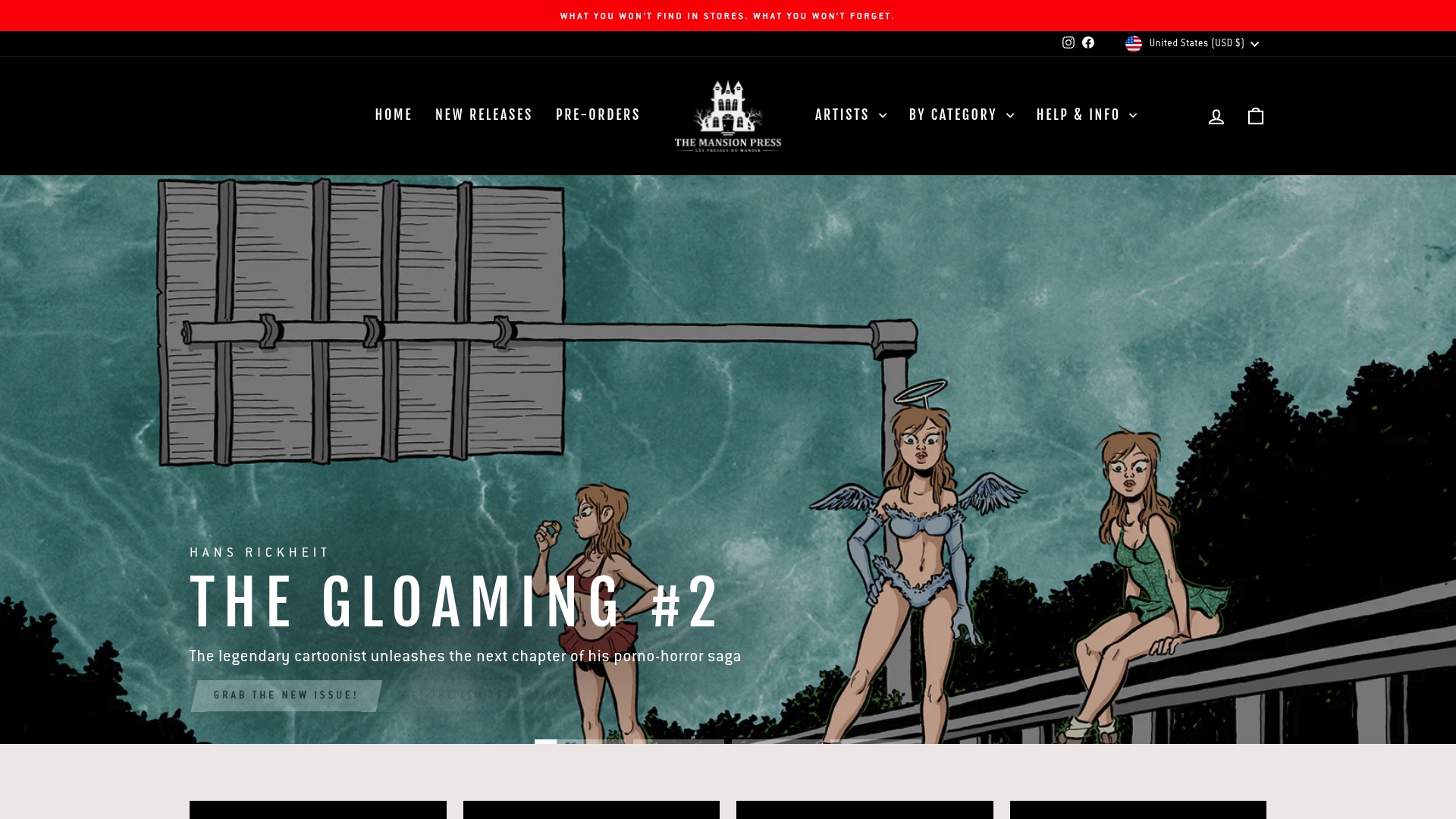7 Most Controversial Comics Every Art Enthusiast Should Know
Did you know that over 50 percent of challenged books in schools and libraries include graphic novels and comics? Comics have long been lightning rods for public debate, with their bold visuals and provocative stories pushing the limits of what society will accept. The intense controversies surrounding comics reveal how these vibrant pages spark essential conversations about art, culture, and personal freedom while shaping both creative expression and collector interest.
Quick Summary
| Takeaway | Explanation |
|---|---|
| 1. Comics challenge societal norms and provoke debates. | They serve as a medium for artistic expression, sparking discussions about cultural boundaries and maturity. |
| 2. Controversial comics gain cultural significance over time. | As works face censorship or challenges, they often become sought-after artifacts, enhancing their artistic importance. |
| 3. Understanding the dynamics of comic censorship is crucial. | Comprehending how societal perceptions shape controversies helps appreciate the complexities of artistic representation. |
| 4. Narrative complexity in comics raises ethical questions. | Works like The Killing Joke prompt readers to explore moral ambiguity and the responsibilities of storytelling. |
| 5. Representation in comics can reshape identity narratives. | Stories like Saga and Stuck Rubber Baby push boundaries of sexuality and race, challenging societal norms of identity. |
Table of Contents
- Understanding Comic Book Controversy And Its Impact
- Action Comics #1: Redefining Heroism And Censorship
- Maus: Exploring Historical Trauma And Artistic Expression
- The Killing Joke: Ethics In Storytelling And Character Portrayal
- Saga: Challenging Social Norms In Modern Comics
- Stuck Rubber Baby: Addressing Sexuality And Race In Art
- How Controversy Shapes Comic Collecting And Artistic Trends
1. Understanding Comic Book Controversy and Its Impact
Comic books are not just colorful pages of entertainment. They are powerful artistic mediums capable of challenging societal norms and sparking intense public debates about artistic freedom and cultural boundaries.
Historically, comics have faced significant scrutiny from social institutions who viewed them as potentially corrupting influences on youth. According to research from the Comic Book Legal Defense Fund, these controversies often stem from complex interactions between artistic expression and societal expectations. Understanding Violent Comics and Controversy in Art reveals how comics can be simultaneously viewed as both art and potential social threat.
The impact of comic book controversies extends far beyond simple censorship. They represent critical moments where artistic boundaries are tested and social dialogue about maturity and creative expression is challenged. Professional case studies demonstrate that when comics are placed on banned or challenged book lists, they generate significant public discourse about freedom of artistic representation.
Key Insights into Comic Book Controversies:
- Social institutions often perceive graphic narratives as potential threats to established norms
- Controversial comics frequently challenge readers to reconsider existing perspectives
- Legal and cultural frameworks continuously evolve in response to artistic provocations
For art enthusiasts and collectors, understanding these controversies provides deeper appreciation of comics as a nuanced artistic medium. By recognizing the complex social dynamics surrounding challenging works, you gain insight into how art pushes cultural boundaries and stimulates critical thinking.
Ultimately, comic book controversies are not just about restriction they are about the ongoing negotiation between artistic expression and societal comfort levels. They invite us to explore uncomfortable territories and challenge our preconceived notions about storytelling and visual representation.
2. Action Comics #1: Redefining Heroism and Censorship
Some comic books are more than just stories. They are cultural revolutions captured in ink and paper. Action Comics #1 represents precisely such a transformative moment in artistic and social history.
Published in 1938, this groundbreaking comic introduced Superman to the world and fundamentally challenged existing narratives about heroism, power, and social responsibility. The comic emerged during a period of significant societal tension, when traditional representations of strength and justice were being radically reimagined. Complete Guide to Banned Comics in History provides crucial context about how such revolutionary works navigated complex cultural landscapes.
Key Historical Significance:
- Introduced the archetype of the superhero as a social protector
- Challenged contemporary views about individual agency and moral intervention
- Represented a new form of storytelling that transcended traditional literary boundaries
The comic faced immediate controversy. Depicting a character who could unilaterally intervene in social problems challenged existing power structures. Superman represented an alternative model of justice that was neither governmental nor purely individualistic but something revolutionary.
For art enthusiasts, Action Comics #1 offers a profound lesson in how visual narratives can reshape cultural imagination. It demonstrates that comics are not merely entertainment but powerful mediums for exploring complex social dynamics.
Beyond its narrative innovation, the comic became a lightning rod for discussions about artistic representation, moral boundaries, and the emerging role of popular media in shaping public consciousness. Its impact extended far beyond its original publication, influencing generations of artists, writers, and cultural critics who recognized its transformative potential.
3. Maus: Exploring Historical Trauma and Artistic Expression
Some artistic works transcend traditional storytelling. Art Spiegelman’s Maus represents one such extraordinary narrative that redefined how complex historical traumas can be explored through graphic storytelling.
By reimagining the Holocaust through anthropomorphic characters where Jews are depicted as mice and Nazis as cats, Spiegelman created a profoundly innovative approach to representing historical suffering. Understanding Exploring Dark Comics Themes for Art Lovers reveals how graphic narratives can tackle challenging subject matter with unprecedented emotional depth.
Key Artistic Innovations:
- Transformed Holocaust representation through metaphorical animal characters
- Challenged traditional historical narrative formats
- Demonstrated graphic novels as serious artistic and historical documentation
Maus confronted multiple layers of controversy. Academic sources highlight how the comic sparked intense debates about appropriate methods of representing historical trauma. Its graphic content and unconventional storytelling approach created significant tension in educational and cultural institutions.
Professional commentators have noted that Maus faced numerous censorship challenges in school settings and public libraries. These challenges underscore the comic’s power to provoke critical dialogue about historical representation, artistic freedom, and collective memory.
For art enthusiasts, Maus represents more than a comic. It is a profound meditation on intergenerational trauma, survival, and the complex ways humans process historical violence. Spiegelman’s work demonstrates how visual storytelling can communicate profound emotional truths that traditional historical texts often cannot capture.
4. The Killing Joke: Ethics in Storytelling and Character Portrayal
Some comic books challenge readers not just through their narrative but through their profound ethical complexity. Alan Moore’s The Killing Joke represents a landmark work that dramatically interrogates the boundaries between heroism, villainy, and psychological trauma.
This graphic novel sparked intense debate within artistic and literary circles about narrative responsibility and character representation. Complete Guide to Dark Visual Storytelling provides critical context about how graphic narratives explore challenging psychological territories.
Critical Narrative Elements:
- Explored psychological origins of comic book villainy
- Challenged traditional heroic narrative structures
- Raised complex questions about trauma and moral ambiguity
The comic generated significant controversy through its graphic depiction of violence against Barbara Gordon. Scholars and critics argued that the narrative objectified a prominent female character to advance a male character’s emotional arc. This approach highlighted broader issues of representation and agency in comic book storytelling.
For art enthusiasts and critical readers, The Killing Joke offers a complex lesson in narrative ethics. It demonstrates how visual storytelling can simultaneously provoke, challenge, and deeply unsettle audience expectations. The work compels readers to examine the thin line between understanding psychological motivations and potentially glorifying destructive behavior.
Ultimately, the comic transcends simple categorization. It is simultaneously a profound psychological study, a challenging artistic statement, and a critical exploration of the moral ambiguities inherent in superhero narratives. By refusing to provide simplistic moral resolutions, The Killing Joke invites ongoing dialogue about storytelling responsibility and character development.
5. Saga: Challenging Social Norms in Modern Comics
Some comics do more than tell stories. They challenge entire cultural paradigms. Brian K. Vaughan and Fiona Staples’ Saga represents a revolutionary narrative that dismantles traditional comic book boundaries and confronts societal expectations head on.
The graphic novel series became a lightning rod for controversy by fearlessly depicting diverse sexual representations and challenging normative storytelling structures. How Graphic Novels Influence Culture: Complete Guide provides crucial context about how contemporary graphic narratives reshape cultural conversations.
Groundbreaking Narrative Elements:
- Challenged traditional representations of sexuality and family
- Integrated queer characters without tokenization
- Normalized non traditional relationship structures
Saga’s controversial journey includes being temporarily removed from digital platforms due to explicit imagery particularly surrounding LGBTQ+ representations. The Comic Book Legal Defense Fund documented how its inclusion on challenged book lists sparked broader discussions about artistic freedom and digital content policies.
For art enthusiasts, Saga represents more than a comic. It is a cultural intervention that uses science fiction storytelling to deconstruct rigid social expectations. By presenting interspecies relationships sexuality and family structures without apology the narrative demands readers confront their preconceived notions about identity and representation.
Ultimately Saga demonstrates the transformative power of graphic storytelling. It proves that comics can be simultaneously entertaining subversive and deeply philosophical challenging readers to expand their understanding of human experience and artistic expression.
6. Stuck Rubber Baby: Addressing Sexuality and Race in Art
Art has the extraordinary power to illuminate complex human experiences through intimate personal narratives. Howard Cruse’s graphic novel Stuck Rubber Baby represents a profound exploration of intersectionality decades before the term became widely understood.
Released in 1995, this groundbreaking work weaves together narratives of racial tensions and sexual identity during the Civil Rights era. Understanding Underground Comic Creators: Art and Impact provides essential context about how comic artists challenge social norms through personal storytelling.
Narrative Breakthrough Elements:
- Integrated queer and racial experiences authentically
- Documented historical trauma through personal perspective
- Challenged dominant narrative structures in graphic storytelling
Professional commentary highlights how Stuck Rubber Baby faced significant library challenges precisely because of its unflinching portrayal of sexuality and race. The Comic Book Legal Defense Fund documented its presence on banned book lists a testament to its provocative yet meaningful cultural intervention.
For art enthusiasts, the graphic novel offers more than a historical account. It demonstrates how personal storytelling can become a powerful mechanism for social understanding. By presenting complex intersectional experiences through a deeply human lens Cruse invites readers to recognize the nuanced realities of marginalized communities.
Ultimately Stuck Rubber Baby transcends traditional comic book narratives. It serves as a profound artistic document revealing how graphic novels can function as critical tools for social history documentation personal testimony and cultural critique.
7. How Controversy Shapes Comic Collecting and Artistic Trends
Controversy is not just a disruptive force in art. It is a transformative catalyst that can elevate comics from entertainment to cultural discourse. The complex relationship between artistic provocation and collector interest reveals fascinating dynamics in creative markets.
Legal scholarship demonstrates how challenged comics become significant cultural artifacts that redefine artistic boundaries. Understanding Collecting Rare Comics Guide for Enthusiasts illuminates how controversial works gain extraordinary value and recognition in collector communities.
Market Dynamics of Controversial Art:
- Censorship can paradoxically increase a work’s cultural significance
- Challenged comics often become sought after collector items
- Artistic controversy generates broader cultural dialogues
The Comic Book Legal Defense Fund has documented numerous instances where controversial comics transcend their original contexts. A comic temporarily banned or challenged can experience dramatic increases in collector value market interest and academic recognition.
For serious art collectors understanding these dynamics means recognizing controversy as a potential marker of artistic importance. When a comic challenges social norms or provokes intense debate it signals a work that is pushing creative boundaries and potentially redefining artistic expression.
Ultimately controversy transforms comics from simple narrative objects into complex cultural documents. By challenging existing structures these works do more than tell stories they generate conversations interrogate social assumptions and create new pathways for artistic understanding.
Below is a comprehensive table summarizing the key concepts and controversies discussed throughout the article regarding comic books as artistic mediums challenging societal norms.
| Title/Comic | Key Themes | Controversies & Impacts |
|---|---|---|
| Understanding Comic Book Controversy | Artistic expression vs. societal expectations | Public debates on freedom of expression; banned book lists stimulate discourse |
| Action Comics #1 | Redefining heroism, challenging power structures | Immediate controversy over Superman’s intervention in social issues |
| Maus | Historical trauma through metaphorical storytelling | Debates on representing historical events; faced censorship in schools |
| The Killing Joke | Ethics of character portrayal and psychological depth | Criticism for objectifying female characters; challenges narrative ethics |
| Saga | Challenging norms on sexuality and family | Temporarily censored for explicit imagery; stimulates discussions on representation |
| Stuck Rubber Baby | Intersectionality of race and sexuality | Banned for its portrayal of race and sexuality; challenges dominant narratives |
| Impact on Collecting | Controversy as a catalyst for cultural significance | Controversial comics gain value and recognition; redefine artistic boundaries |
Bring Your Controversial Comic Collection to Life
If reading about banned masterpieces and groundbreaking graphic novels has awakened your passion for owning art that pushes limits, you are not alone. The article highlights how controversial comics spark cultural debates, offer rare insights, and become valuable collector items. Yet, finding these unique and limited-edition works in traditional stores is a challenge. Art enthusiasts and collectors often struggle to discover authentic editions and exclusive artist collaborations that capture the true spirit of creative rebellion.

Now is your chance to transform inspiration into action. At The Mansion Press, you can explore a curated catalog of rare comics, artbooks, and original works by visionary creators who challenge the boundaries of art and society. Whether you are hunting for a conversation-starting piece for your collection or searching for limited releases by contemporary comic legends, our shop connects you directly with the spirit of controversial art. Visit The Mansion Press today and secure the most talked-about editions before they disappear from the market.
Frequently Asked Questions
What are the main controversies surrounding Action Comics #1?
Action Comics #1 is controversial for introducing Superman, which redefined heroism by challenging existing power structures and societal norms. To gain a deeper understanding of its impact, consider reading analyses that explore its context in the late 1930s.
How does Maus address historical trauma through its storytelling?
Maus employs anthropomorphic characters to depict the Holocaust, creatively representing complex historical suffering. Explore this narrative’s depth by reviewing its reception in educational systems and discussions about historical representation.
What ethical questions does The Killing Joke raise for readers?
The Killing Joke challenges readers by exploring the psychological motivations behind villainy and its graphic portrayal of violence against a female character. Engage with critiques of its moral ambiguity to better appreciate the narrative’s intricacies.
How does Saga redefine traditional norms in contemporary comic storytelling?
Saga is notable for its diverse representation of sexuality and family structures, directly confronting societal expectations. To comprehend its cultural significance, analyze how its themes provoke discussions around identity and representation in modern media.
Why are controversial comics considered valuable in art collecting?
Controversial comics often gain significance as cultural artifacts that reflect artistic boundaries and social discourse. To understand their value in collecting, look for trends that show how these works transform into sought-after items following censorship or public debate.
How can art enthusiasts appreciate the complexities of controversial comics?
To appreciate the complexities of controversial comics, immerse yourself in their historical and cultural contexts by reading available analyses. Doing so can enhance your understanding of how these works challenge norms and provoke meaningful conversations about art.

